|
The wonders of technology continue to develop in incredible ways as the years go on. 50 years ago, the thought of even publishing an article like this on a medium that anyone in the world could read would have been unfathomable. Not to mention the fact that we can visit any site we want on the Internet with a device that fits in our pocket, create entire objects through 3-D printing, and even talk to a piece of technology (Siri/Alexa) to make using our technology easier. Along with our ever-advancing world, Scooby-Doo has also made some advances in its inclusion of technology in episodes and films over the years. Since 1969, we've gone from having robots that can only beep and boop to even Scooby having a phone. This article gives an overview of the evolution of technology in the franchise, and also addresses of the question of if the inclusion of technology within Scooby can go too far (or if it already has). We start out in 1969 with the episode "Foul Play in Funland," where the villain is a robot. The robot is very simplistic and can basically only move, lift objects, and making beeping noises. The robot also does not have much control over itself, and can only be operated by remote control. It seems like nothing significant now, but at the time, the idea of a robot existing was shocking. The concept of robots existed long before this episode was ever made, but they were quite impractical as they had to be operated manually (as in, the creator had to physically pull levers and press buttons simply to get the arms to move). Early conceptions of robots included steam-powered machines that we would consider to be more like vehicles. One such example is a "robot" created by Giovanni Torriani in 1557 to fetch the emperor's daily bread for him. Robots as we know them today did not exist until the mid-20th century. The first fully-functioning robot was built in 1954 by George Devol, only 15 years before "Foul Play in Funland" was made. (More information on the history of premodern robots can be read here.) In 1969, many people were still shocked at the creation of such a thing, and many people already worried technology was going too far. It may also be worth noting that a tracking device was utilized in "Decoy for a Dognapper" to help the gang use Scooby as bait so they could track the dognapper, though the plan ultimately failed and the technology was not a large part of the plot. Interesting, "Foul Play in Funland" seems to address this issue of "has technology gone too far?" The end of the episode presents the moral that robots are not fit to replace human labor, because they do not perform tasks with the same care that humans do, in addition to the possibility of a malfunction. In the case of this episode, the villain (Sarah) intentionally sabotages the robot to show her husband that children need to be looked after by a human. Her entire motivation was because she felt it was unsafe to have robots operating a carnival for children. Most of us would agree with this, and I don't think society is ever going to move in this direction with potentially dangerous careers such as operating amusement parks. The writers of this episode would most certainly be shocked at how much technology has continued to advance today. "The Night Ghoul of Wonderworld" is an example of more fantastical technology being used within a Scooby-Doo episode. The episode's plot centered around a wondrous theme park where people could go to any themed world make their wildest dreams come true, with robots programmed to play each of the various characters in each world. Velma chooses to go to the Sherlock Holmes era of London, where one of the robots' programming goes haywire and the robot begins attacking people. This demonstrates another example of a "technology gone bad" type plot. The metaphor here is clear: even if technology may seem like it allows people's most vivid dreams to come true, that dream may actually be a nightmare, and we may not realize it until it's too late. Technology and robots were not addressed with this rhetoric of being "dangerous" for a while after "Foul Play in Funland." The villains would occasionally turn out to be robots (for example, the No-Faced Zombie in "The No Faced Zombie Chase Case" in The Scooby-Doo Show), and sometimes the villains would operated things by remote control. The next major plot centered around technology was in 1980, with The Richie Rich / Scooby-Doo Show's "Robot Ranch." Given the episode was only 7 minutes, there was not a lot of time to meaningfully develop a plot. However, some observations can be drawn from the episode. The episode focuses on Scooby, Shaggy and Scrappy going to a "robot ranch." To my knowledge, "robot ranches" were never a popular concept in real-life. A quick Google search brings up this Scooby-Doo episode as the first result, followed by a couple warehouses that people can walk through and look at various unusual mechanical inventions. I believe the concept of a "robot ranch" was also used in another Hanna-Barbera cartoon, The Jetsons, in the episode "Dude Planet" which features Jane and her friend attending a planet that consists of dude ranch, which is run by robots. Anyway, once at this robot ranch, Shaggy, Scooby and Scrappy have to run away from a robot that has turned evil. In the end, it turns out to be a "robot master" controlling the robot, because he wants to turn Shaggy and the dogs into robots. This episode has this same underlying theme as "Foul Play in Funland." The episode represents robots as being dangerous, which is perhaps even intended as a social commentary on the advancement of technology being bad for humanity. There's no way to know the writer's intention (especially given to my knowledge, there are no public records of who wrote any of these first-season Richie Rich shorts), but the recurring theme of technology causing problems for humans is an interesting pattern. The plot about the robot master trying turn the guys into robots could perhaps also be represented as a commentary on the societal fear of us becoming slaves to technology. "Mission Un-Doo-Able" from The New Scooby-Doo Mysteries is the first semi-positive representation of robots we see within the franchise. In this episode, Scooby and Shaggy run into a robot named Mr. Droid, who is under the control of the villainous Mastermind. They are able to trick this robot into thinking he is going to make it big in Hollywood, even resulting in a dance number with Scooby, Shaggy and the robot. The robot is still a villain, although we see an almost human-like side to him when he reveals his dreams of being a Hollywood actor. This is also the first episode in which this recurring plot thread of "robots turning against us" is not present. It quickly appears again though within a few years, which brings us to "Robopup" from A Pup Named Scooby-Doo. The plot of "Robopup" involves Daphne's house being robbed by a ghost chef. In order to help solve the mystery, Daphne's head security guard brings in a robotic dog named Robopup to help solve the mystery. All throughout the episode, there is a B-plot of Scooby feeling inferior to Robopup, because the robot dog is more efficient than Scooby is in a number of ways. This is once against consistent with the societal fear that robots will be able to replace us. I'm sure everyone reading this article has heard someone say that someday, robots will take over our jobs and humans will become obsolete. In a sense, this episode's plot mirrors this concern, because Scooby feels he has no purpose anymore in his job of helping the gang solve mysteries due to Robopup's high-efficiency. In the end, Robopup isn't the main villain, but he is revealed to be secretly evil. This could be further analyzed as reflecting the concern that the quick technological advancement may actually be bad for us, even though we think it's a good thing right now. This is about as far as technology's development went during the Hanna-Barbera era of Scooby. I chose to stick to episodes that had a heavy focus on technology, though there were certainly small pieces of technology present in other episodes such as the aforementioned remote control devices, as well as villains that turned out to be robots. Moving into the WB era of Scooby with What's New, Scooby-Doo?, the changes seen were somewhat drastic. What's New was presented as an "technologically updated incarnation" of Scooby, where we see the Mystery Machine equipped with GPS technology in one of the first scenes of the series. The gang is also seen with portable technological devices, such as Velma's computer which appears semi-regularly throughout the series, even during the show's theme sequence. From this point on, the gang now had the ability to research information on portable technology such as cell phones, and people are seen calling and texting each other nonchalantly in various episodes. At one point, in "Big Scare in the Big Easy," Shaggy called Daphne on her cell phone when she was kidnapped, and traced the ring with his ears, showing a more helpful side of technology than previous displayed in the franchise. In my opinion, technology was interwoven well into the show where it did not feel jarring or like a disruption to the formula. "High Tech House of Horrors" (also known as "High Tech House of the Future") is perhaps one of the best examples of this. The plot of this episode features the gang attending a "future fair" in which unique technological devices are put on display. One such attraction of this fair is a smart house named SHARI, powered with advanced technological features such as doors that can open themselves, sprinklers that turn on themselves, and automated household appliances that the house's mainframe controls. The attraction is closed, but Daphne somehow disappears within the house. The gang tells the creator of the house, Professor Laslow Ostwald, and he lets them in the house to find their friend. When they enter, they are quickly chased by a robot butler named J31 v2.3, nicknamed Jeeves. This evil robot butler once again draws back upon the theme of technology being evil, dangerous, and frightening. What's more interesting though is as the plot progresses, the gang realizes that the robot is not the villain; it's the house itself. SHARI craves people focusing on her, even repeatedly shouting "Pay attention to me!" at the end of the episode. While this remains consistent with the theme of the advancement of technology being potentially dangerous, the message of this episode also could be interpreted as the dangers of focusing too much attention on technology. It has become a common complaint in society that children spend too much time in front of screens, causing them to focus less attention on playing outside and spending time with friends. Some people even feel that the amount of time children use technology should be limited. This is reflected in the fact that the only way SHARI could be defeated was not paying attention to her. The gang paying attention to her was what allowed her to cause mayhem. Thus, whether the writers intended it or not, a moral that could be taken from this story is that technology only has as much power over your life as you give it. This same theme is more loosely seen in the series finale, "E-Scream," where Velma accidentally walks in a simulation where things keep getting worse, until she realizes the simulation has no basis in reality. Once she acknowledges that none of it is real, the nightmare stops and everything goes back to normal. While this theme is much more tangential than we see in "High Tech House of Horrors," it is still one way that the episode could be interpreted. It should be noted that "Go West, Young Scoob" from this series also features the gang visiting a Westworld-type ranch where the robots are revealed to be evil. There is no new major theme to discuss in this episode, as it simply ties back into the recurring "potential dangers of technology" theme that has been already thoroughly analyzed in this article. Shaggy and Scooby-Doo Get a Clue! continues this trend where technology is represented as a positive and helpful thing for society. One of the main elements of the show is based around technology. Shaggy's Uncle Albert is a scientist and is revealed to have been experimenting with the creation of technology. A major plot point revolves around Dr. Phibes kidnapping Uncle Albert because he discovered nanotechnology. In addition, the Mystery Machine in this show is equipped with fantastical new technology that allows it to change into pretty much any vehicle in existence. The Mystery Machine's capability of transforming in an instant comes as an immense help to stopping Dr. Phibes on numerous occasions throughout the show. While many of the plots do revolve around Phibes creating some sort of new technology to cause terror (often with the help his "techies" Mark and Ricky), many of this new technology is somewhat fantastical and not something that is possible in real-life. The concept of cloning is possible and was first accomplished with humans in 2007, which is only four years before it appeared in this show. However, cloning is portrayed in a somewhat humorous light beginning with the episode "The Many Faces of Evil!", featuring Phibes cloning himself. Instead of creating an exact genetic copy, Phibes somehow creates multiple copies of himself that reflect different versions of his personality. This included Pirate Phibes, Evil Phibes, Clown Phibes, Kung Fu Phibes, Kleptomaniac Phibes, Pantsing Phibes, and Peek-a-Boo Phibes. To my knowledge, it is not possible to clone someone in order to see what they would be like with only a single personality trait. This reflects one of the more silly representations of technological advancements in the franchise, which does not seem to have any major reason for occurring other than to be goofy. The other episode worth mentioning is "Smart House." In the episode, Shaggy and Scooby equip Uncle Albert's house with artificial intelligence. Phibes is able to infect this house with a computer virus, causing it to make the house dangerous for them to live in. The conflict of this episode draws upon the idea that while technology is amazing, it does come at the cost of having some level of vulnerability. In an increasingly online world, people have to do confidential things online, such as banking, paying bills, and work or school related tasks. Although it may be more convenient to do all these things online instead of doing them in person, it does allow for the possibility of hacking, malware, and theft of information. This episode's conflict demonstrates how using technology makes us vulnerable, especially as we increasing rely on it for elements of our everyday lives. Scooby-Doo! Mystery Incorporated also features the subtle inclusion of technology throughout the show. The inclusion of technology stood out in a few episodes: in "The Midnight Zone," it is revealed that Professor Pericles has built an army of unstoppable German World War II robots, which he names the Kriegstaffelbots. This robot army takes the previous theme of technology going bad to the next level, and could be interpreted as reflecting societal fears of a mass robot invasion, as the army was so big that the gang could not stop them. A positive use of technology within the series was included in "Wrath of the Krampus," where the gang came up with an ambitious master plan to fool the original Mystery Incorporated by using a robot disguised as a villain, which the new Mystery Incorporated pretended to chase after as a diversion. Moving to Be Cool, Scooby-Doo!, the episode "Me, Myself, and A.I." features the gang visiting a technology company. Daphne immediately begins complaining that humanity is too reliant on technology, and it's ruining our ability to relate to one another. The gang is quickly informed that an evil robot named the Butler 3000 is trying to shut down the company. In a bit of a different twist from the traditional "robot gone bad" type plot, a robot guide named Techy follows the gang around and helps them solve the mystery. Eventually, the Butler 3000 takes over all of the technology in the company, meaning the gang cannot trust any sort of technology. While Daphne rejoices the fact that technology cannot be used as a crutch, Velma is sad that technology has let her down, which Daphne interprets as Velma being overdependent on technology. Eventually, the gang catches the Butler 3000, who is revealed to be someone that worked for the company. The villain's motivation for controlling the Butler 3000 to make it evil was because she was worried that the technology would make her job as an assistant obsolete. In a sense, this is a reimagining of the classic "Foul Play in Funland" plot, with the added twist of a good robot. The episode also intentionally leaves the moral ambiguous when Daphne comments that she hopes everyone learned a lesson about overreliance on technology. The other four gang members say they still think technology is useful, leaving Daphne disgruntled. This episode is different in the sense that it shows us both sides of the technology debate, rather than attempting to provide a lesson. This use of technology continued into the most recent series at the time of writing this, Scooby-Doo and Guess Who? In this series and the DTVs, Velma often looks up information on her tablet, and the gang sometimes uses computers or mobile devices for various things. Sometimes, technology is presented in a humorous way, such as in "Falling Star Man!" where the episode's guest star, Terry Bradshaw texts a friend "There is an alien in my kitchen, LOL." Guess Who provides a couple of similar "evil robot" plots, which I will provide a brief overview of. In "When Urkel-Bots Go Bad!", guest star Urkel's robot is hijacked by the control of the technomancer. This lightly touches upon the fear that technology makes us vulnerable once again, because our information can be hijacked or stolen. "The Crown Jewel of Boxing!" and "Total Jeopardy!" both feature plots in which a robot has an unfair advantage over humanity. "The Crown Jewel of Boxing!" features professional wrestler Laila Ali being challenged to a wrestling match by a robot. This causes concern as the robot is far more powerful than her, and the lack of humanity within the robot causes it to ruthlessly destroy whatever's in its way. "Total Jeopardy!" features a robot contestant named Max Kilobyte competing against Velma and Shaggy in a game of Jeopardy. The robot is far smarter than Velma or Shaggy, and at several points has a large lead over the human contestants. While this is a very tangential message, it is possible that this is an attempt to reflect the worry that technology will become overly powerful and somehow turn against humanity. This fear has become growingly common as technology gets more advanced, especially with Artificial Intelligence becoming smarter and smarter. This brings us to the final question I want to explore in the article. In "What a Night, for a Dark Knight!" from Scooby-Doo and Guess Who?, Scooby is shown to have a cell phone, and becomes incredibly upset when his cell phone breaks. Scooby is never shown to have a cell phone in any other episode, so to have him be suddenly obsessed with it felt a tad odd and out of character, at least in my opinion. This illustrates the idea of technology within the show being something negative. This scene of Scooby's frustration over his cell phone does not add anything to the plot, and feels like an overzealous attempt for the show to be "current." While technology in shows is not inherently bad, simply forcing it into a show to seem "hip" is lazy writing. Arguably, the addition of technology should contribute something to the plot of the episode or the development of the character. This is the only instance in the franchise thus far where technology felt blatantly out of place.
The above was an extreme example, and the decision whether to include technology in a franchise or film is ultimately up to the writing team and their creative vision. Some writers choose to be more reserved with their use of technology, while others feel it is important to include something that is increasingly becoming part of our social reality. For those that have read my Scooby fanfiction, I've made the joke that "you never know who will be reading your story in 50 years!" a number of times in my author's notes at the end of each chapter. Although this remark was intended to be somewhat humorous, I believe there's also some truth to it. I'm very hesitant to include any sort of modern technology like phones or laptops in my writing, as I don't want my story to be dated in any way. Many people look back at shows like Saved by the Bell and laugh at the gigantic mobile phones the characters used to make phone calls. In fact, the idea of this is so laughable that these huge phones are now nicknamed after a character from the show, as "Zack Morris phones." Another interesting example of a lack of foresight on the legacy of a film. The Rankin-Bass stop-motion special Rudolph's Shiny New Year was released in 1976, and includes a line by a character referring to the New Year as "19-Wonderful." From this line alone, it's clear the writers did not think this special would have much of a legacy beyond a the 20th century, and it seems almost comical to watch the special now. This is not to say that any show including modern technology become a laughing stock as it ages. Many shows and movies work technology in quite well, and the decision really is up to the writers' preference. In my personal opinion, technology has begun moving so fast in the 21st century that it is very easy to have the inclusion of a certain technology age a work instantly. Not all that long ago, flip phones were popular. Facebook was the chosen social network for teenagers. Now, you'd likely be laughed at if you were trying to text someone on a flip phone, and teenagers think of Facebook as a site taken over by "old people." That's not to say you shouldn't use it, it's just my personal decision in my own writing that not including modern technology involving the Internet (i.e. phones, computers, etc.) eliminates the possibility of being quickly outdated. It's also worth noting that many things can outdate a work, such as the use of current slang or certain clothing. In my opinion, technology is the easiest way to automatically date a work. As technology has evolved in our world over the past 50 years, it's also evolved within Scooby-Doo. We've gone from having silly-looking robots that can only make beeping noises to the main characters all having portable technology that aids them in solving mysteries. Whether this has had a positive or negative affect overall on the franchise remains up to personal opinion, but I argue that if technology is going to continue to be included in the Scooby franchise, it should be worked into the franchise in a way that is not intrusive to the characterization of the gang. Thus far, the Scooby franchise has done an excellent job overall incorporating technology into the show in a way fits with the plot and does not alter the characterization of the gang.
24 Comments
James Dixon
11/5/2021 08:30:54 am
👏
Reply
11/5/2021 10:15:12 pm
Thank you!
Reply
James Dixon
11/5/2021 08:33:33 am
I never understood how Shaggy's inheritance could've paid for all the transformations of the Mystery Machine. I like to think that he added the nanotech to it, but I don't think Ray was thinking that scientifically when planning that, it's simply how it's depicted onscreen.
Reply
11/5/2021 10:16:10 pm
I like your theory of the Mystery Machine upgrades being nanotech! Yeah, I think Ray was more going for "silly and cool" than actually thinking scientifically about the show's concept.
Reply
James Dixon
11/5/2021 08:45:30 am
The problem that writers have managed to avoid is the gang have had mobiles since WNSD, so if one of them get lost, they can just use their phones, removing one of those tropes immediately. One episode of WNSD I remember when Daphne got kidnapped, Shaggy phoned her up to hear ringtone. Again, writers have somehow managed to avoid this being a problem, but when they all have modern tech at their disposal, it does raise these issues.
Reply
11/5/2021 10:42:14 pm
This is another great point. I added a sentence about it to the article as it was arguably a decent-sized omission on my part. I'm glad they haven't turned this into a problem or a writing crutch, where it's just used lazily to provide an easy solution. The villains using their phones is quite an amusing thought. In a future series, the gang will just catch the villains when they're out of costume texting their friends or something haha.
Reply
Becker
11/6/2021 03:51:25 am
In Scooby-Doo, phones can either make for quick lazy solutions or for interesting spins on the formula. It's a fine line to walk, but they can work. I think that "Big Scare in the Big Easy" from WNSD did it pretty well imo.
James Dixon
11/6/2021 04:28:20 am
I meant, why don't the villains take the gang's phones when they're kidnapped? If the villain had taken Daphne's phone, then it could've quite possibly led Shaggy and Scooby to the villain, instead (the episode in question was the one Becker mentioned). 11/6/2021 08:44:32 am
@Becker Yeah, "Big Scare in the Big Easy" definitely handled it well.
The Night Ghoul of Wonderworld
11/5/2021 10:45:46 am
Seriously, does nobody remember me, The whole scary robot going haywire haunting a technologically advanced theme park in the 1980's that was supposed to make your dreams come true? Dude not cool. I would have got away with it to if not for those meddling teens and there dogs.
Reply
11/5/2021 10:36:46 pm
You may want to try looking again lol.
Reply
Samuel Kirkwood
11/6/2021 12:58:29 pm
LOL! Glad you liked my little joke! I think the Night Ghoul is pleased with your effort.
Jacob Staggs
11/5/2021 10:53:00 am
I, in particular, enjoyed the implementation of the tracking device in Decoy for a Dognapper.
Reply
11/5/2021 10:20:41 pm
You all are making such good points that I wish I'd put in the article! With this one, I hadn't realized tracking devices were first developed so close to the time of this episode. Looking it up though, tracking devices were first created in the early 1960s, so they would have been created just a few years before this episode aired!
Reply
Matt
11/6/2021 12:26:15 pm
An EXCELLENT post! I am actually majoring in IT so while I am not an expert, a lot of this Scooby Doo level takes on the issues of technology interest me. Me Myself and AI is a HUGE one because technology taking people's jobs is a very big concern in the real world. Like that is a pretty realistic message that they put in there. It is a issue that Scooby Doo has tackled pretty well, as I am a strong believer that technology shouldn't go too far and we should still enjoy the simple and real things in life
Reply
11/7/2021 07:41:33 am
Thank you so much! That's so cool! I'm also a strong believer that technology shouldn't go too far, and that we should enjoy the simple things in life. I don't know if I'd say technology isn't "real" though, but I absolutely get your point.
Reply
James Dixon
11/6/2021 03:28:23 pm
The What's New theme song made the gang look really professional by having them track down a crook's thumb print with Velma's laptop. A totally different Mystery Inc.! Except, they didn't do any of that in the series.
Reply
11/7/2021 07:42:20 am
That always bothered me when I was younger too haha.
Reply
sdf
11/7/2021 03:16:29 pm
i love these articles keep em up
Reply
11/10/2021 01:52:14 pm
I realized I forgot the Kriegstaffelbots and the gang's plan in the Krampus episode involving technology as well, and added two paragraphs to the article talking about those.
Reply
Such an amazing article. Incredibly in-depth, and you highlight a lot of cool episodes. Technology is certainly a double edge sword when it comes to entertainment, especially, like how you said, in how it is evolving so fast.
Reply
11/16/2021 10:19:48 pm
Thank you so much, Joel! I totally agree with you that there's a certain charm to old school, hand-drawn animation. Some of the immaculate backgrounds included in Scooby-Doo, Where Are You? are arguably better than the modern stuff they've used with Guess Who and the DTVs. I also feel that it definitely helped with the creepy atmosphere of the episodes.
Reply
Leave a Reply. |
AuthorWildwindVampire Categories
All
Archives
July 2024
|


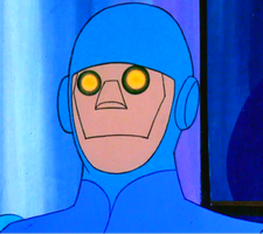
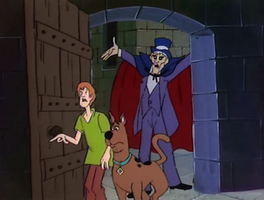
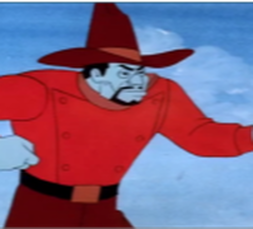
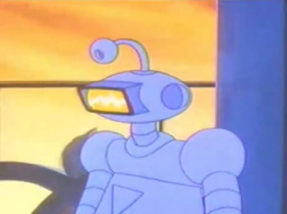
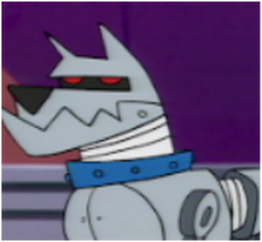
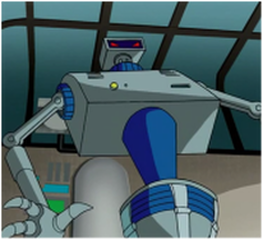
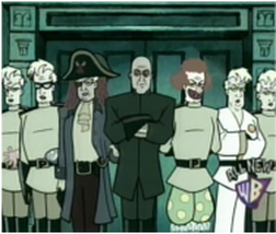
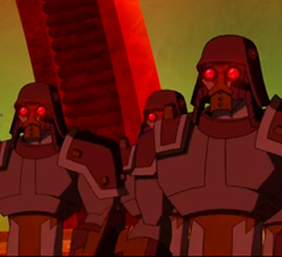
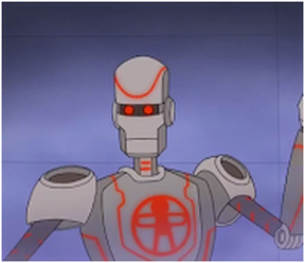
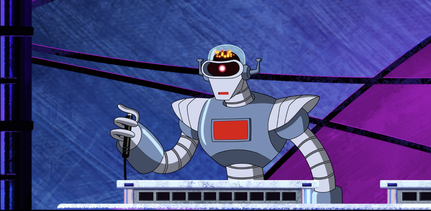
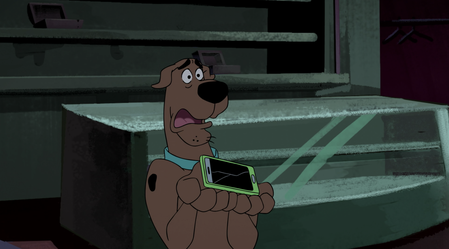
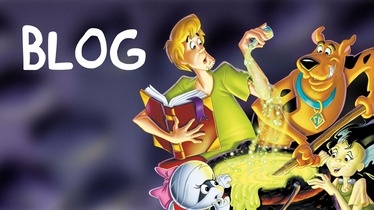
 RSS Feed
RSS Feed
